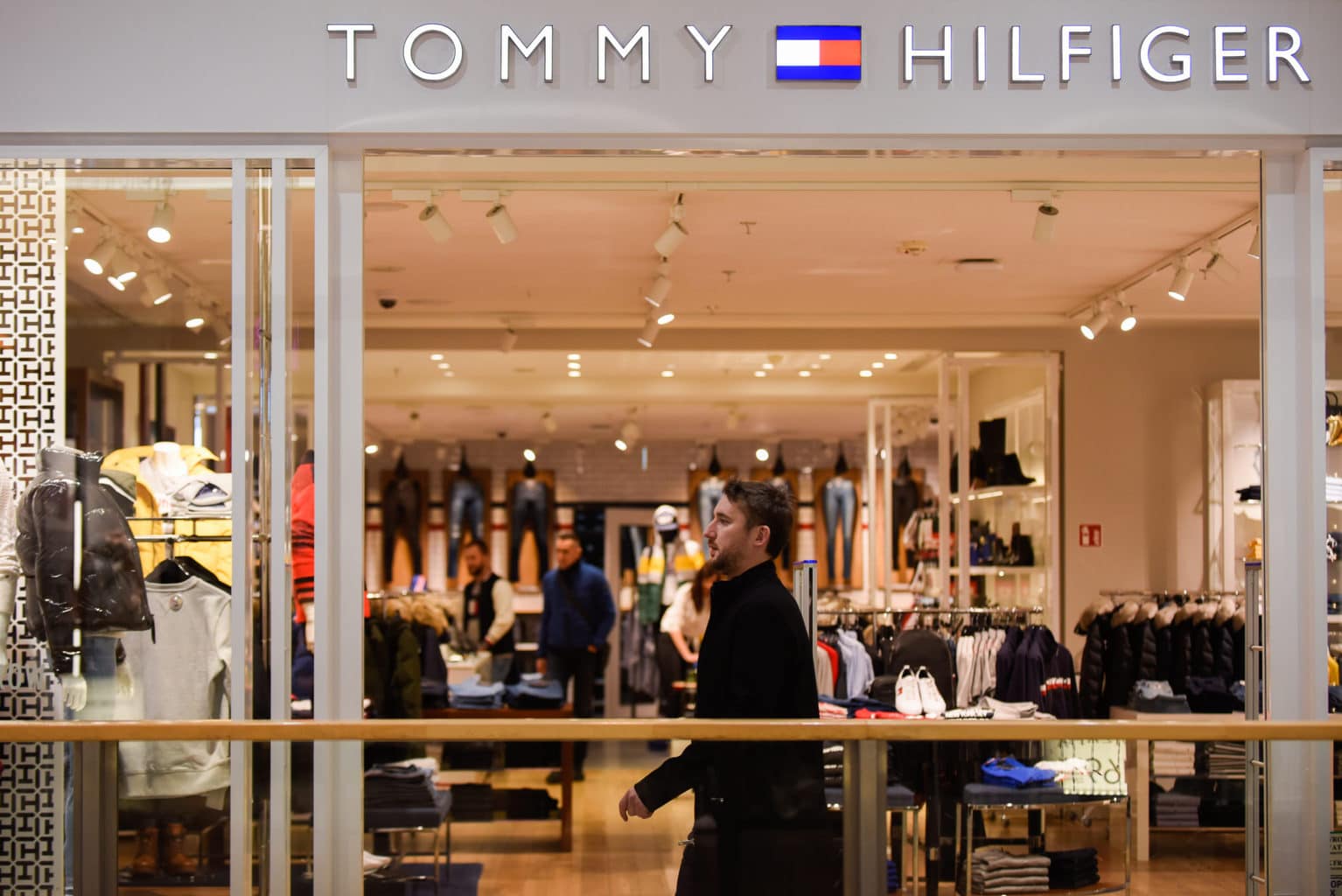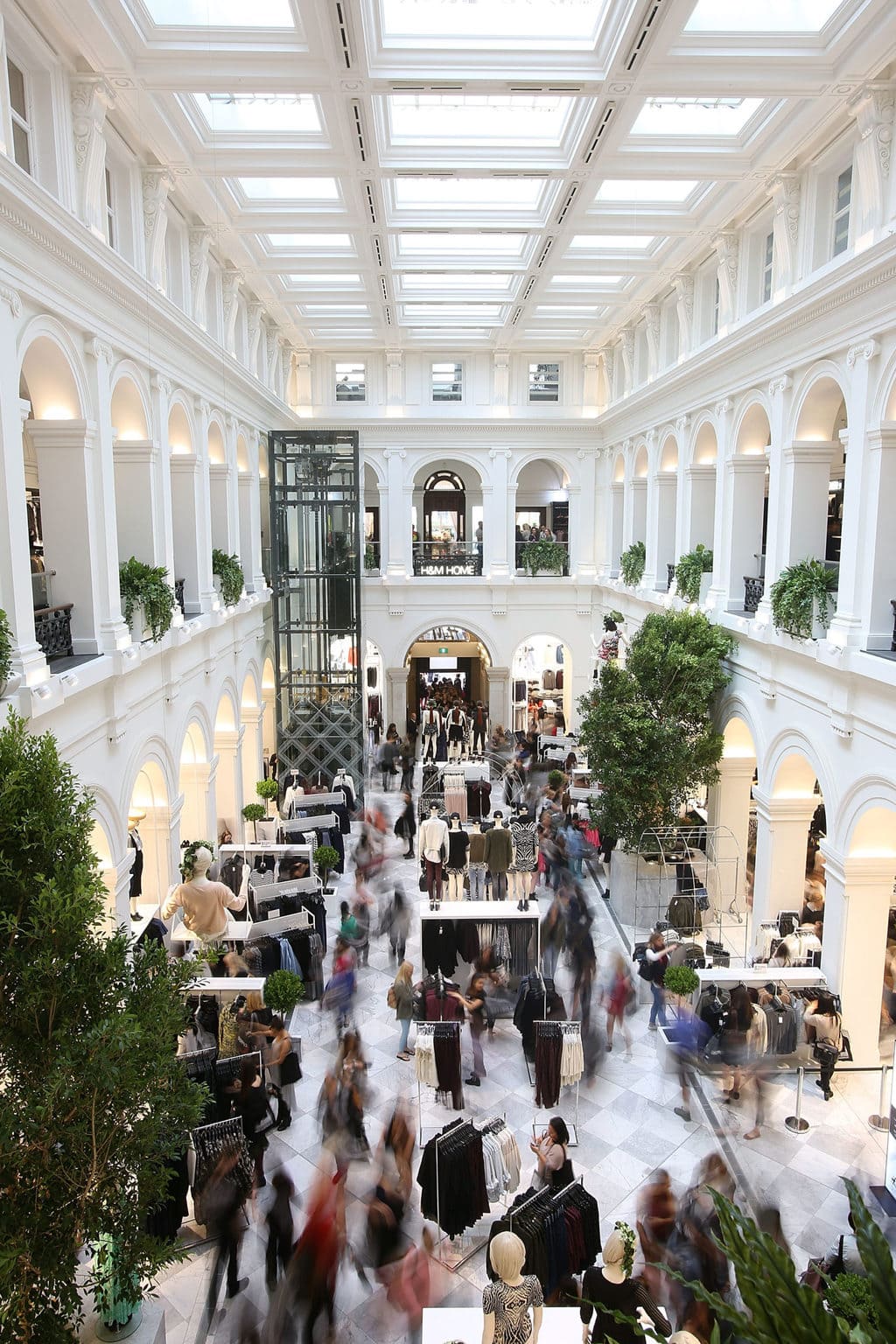
Excessive spending is out; ‘post-growth’ consumption is in. Savvy retailers are now exploring ways to engage with the ‘new consumer’.
In Australia and around the globe, the retail industry is in a state of flux. While the predicted apocalypse for bricks-and-mortar retail never quite eventuated (just take a look at the expansion of shopping centres in Australia), the number of businesses closing their doors or reporting slow sales suggests many are struggling to understand and engage with today’s consumer.
At the recent World Retail Congress – the leading global retail conference held in Amsterdam – retail leaders from brands such as Levi’s, Tommy Hilfiger and Sephora shared their retail strategies and focus areas.

Tommy Hilfiger is just one of the brands looking to create unique experiences and customisation.
The consensus was that to appeal to customers in today’s retail climate, retailers need to create a memorable experience and offer consumers hyper-personalisation and customisation.
Before retailers can do that, they need to understand just who today’s consumer is. We’re seeing a fundamental shift in consumer behaviour from conspicuous consumption to conscious consumption. The ‘post-growth’ consumer is on the rise.
The rise of the ‘post-growth’ consumer
In response to social and environmental factors such as the exploitation of people and resources, and amid the economic cycle of the global recession, today’s consumers are adopting a ‘post-growth’ mindset.
This is a shift in values, choices and most importantly behaviour, where we are seeing consumers become more mindful of their retail behaviours in pursuit of a more meaningful existence.
These consumers find less joy in excessive spending and choose to spend money on experiences rather than material goods. They are ultimately more considered in their retail and consumption choices and concerned their shopping habits will impact the world around them.
These consumers are constantly searching for meaning not only in how they live but in how they consume.

Today’s consumers choose to spend money on experiences rather than material goods.
As a result, the drivers behind consumer purchase decisions are evolving and we’re seeing a shift in how people decide what, when – and if – to buy.
Price and convenience are not the only primary purchase drivers anymore; conscious of the environmental and social impact of their purchase decisions, today’s consumers are more likely to buy from a brand or retailer that aligns with their own personal values.
This means that we’re seeing new and evolving purchase drivers come into play, with concepts such as ‘sustainable’, ‘values’, and ‘conscious’ being applied.
Not just a mindset
What exactly is pointing to this change? Insights and trends from around the world show us that today’s consumers want to make better choices via sustainable and ethical products.
Research shows that 91 per cent of consumers want brands to use sustainable ingredients or material and 92 per cent believe that sustainable business practices should be standard. Research from Monash Business School’s ACRS November 2018 Omnibus found that 50 per cent think it is important that products are made from recycled materials.
In good news for retailers, consumers are willing to pay more for these options; 66 per cent of consumers are willing to pay more for products from a sustainable or socially conscious brand (and this rises to 73 per cent for millennials), while 70 per cent are willing to pay more for products that don’t infringe on human rights.
And consumers are voting with their wallets. In the last two years, there’s been an 11 per cent increase in ethical cosmetics sales.
This is primarily driven by millennials demanding more ethical products from the beauty industry. There’s also been a decline in leather shoe sales as consumers look to alternative materials and actively avoid products made with leather.
In the same period, there’s been an increase in consumer spending on ethical clothing, and a 60 per cent increase in women buying second-hand clothing, with concerns about the environmental impact of fast fashion cited as the key reason for this increase.

Consumers want brands to use more sustainable materials.
Remaining relevant and becoming an ally
To remain relevant in today’s changing retail landscape, retailers will need to do more than just provide a memorable or personalised experience. They’ll need to become an ally to the new consumer by enabling them to make consumption choices that align with their values.
There are various way retailers can do this.
The first and most obvious way is through their products. A great example of this is Adidas’ recent collaboration with Stella McCartney to create a vegan pair of Stan Smiths, Adidas’ iconic leather sneaker made from a leather alternative to appeal to the new consumer’s sustainable sensibilities without skimping on style.

H&M is attempting to address its role in fast fashion waste.
Another way is through education and transparency of the supply chain. Direct-to-consumer brand Everlane is leading the charge here by offering consumers the opportunity to meet the makers of their clothes and take tours of their factories, so consumers know exactly how their clothes are being made.
Good decision-making doesn’t need to stop at the purchasing point; retailers can continue to help consumers make decisions they feel good about after their purchase through post-retail initiatives.
Retailer H&M has been recognised as driving change in the fast fashion industry by establishing a clothing recycling service in an effort to offset the impact of the fast fashion industry on the environment.
And for retailers who aren’t able to implement these types of initiatives, there’s always the sensory retail environment.
The typical store experience is designed to stimulate shoppers (think loud noise or music, bright colours etc); but this means consumers need to decipher hundreds of (often-overwhelming) advertising messages which can prevent them from making a decision they feel good about.
Research suggests that green spaces in shopping centres can reduce consumers’ cognitive load and give them the mental space to be more mindful and considered in their shopping choices, and ultimately make them more satisfied.
We might see even more strategies for retailers to enable consumers to make decisions that align with their values, such as AI-powered mindful consumption and 3D printed fashion.
In the future, AI like Alexa and Siri could help us choose ethical brands and products, as we wait for our fashion choice to print. Both would be a welcome step towards offering everyday consumers sustainable fashion alternatives that also reduce pollution and waste.
Dr Eloise Zoppos is an applied academic and commercial researcher in the ACRS research unit, positioned in the Monash Business School’s Department of Marketing. She first presented this topic at the World Retail Forum in April.
ACRS will hold their next business breakfast on the topic of ‘Marketing meaning: Strategies for the new consumer’ on Friday, 18 October 2019. To register your interest, please email acrs@monash.edu


